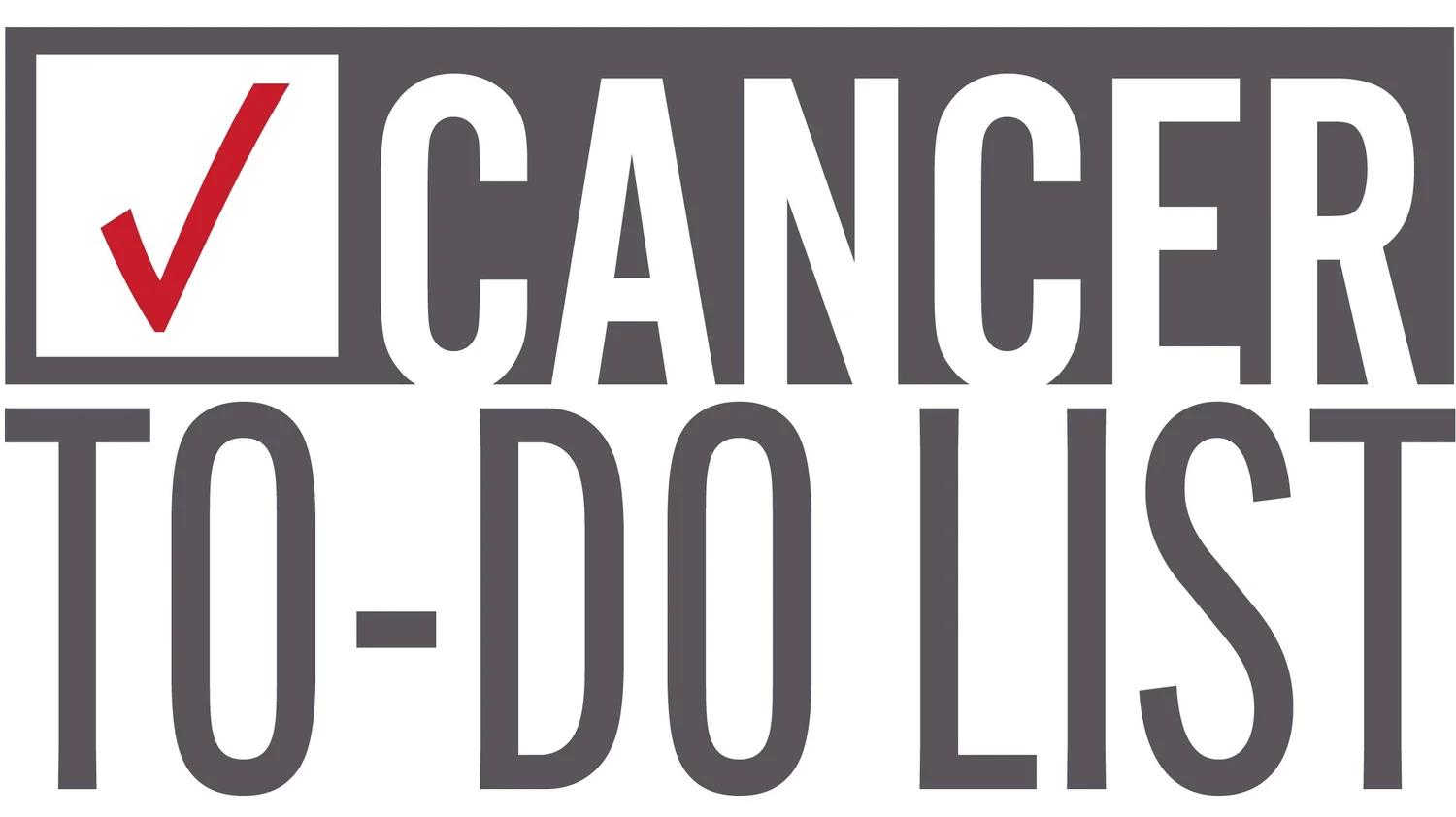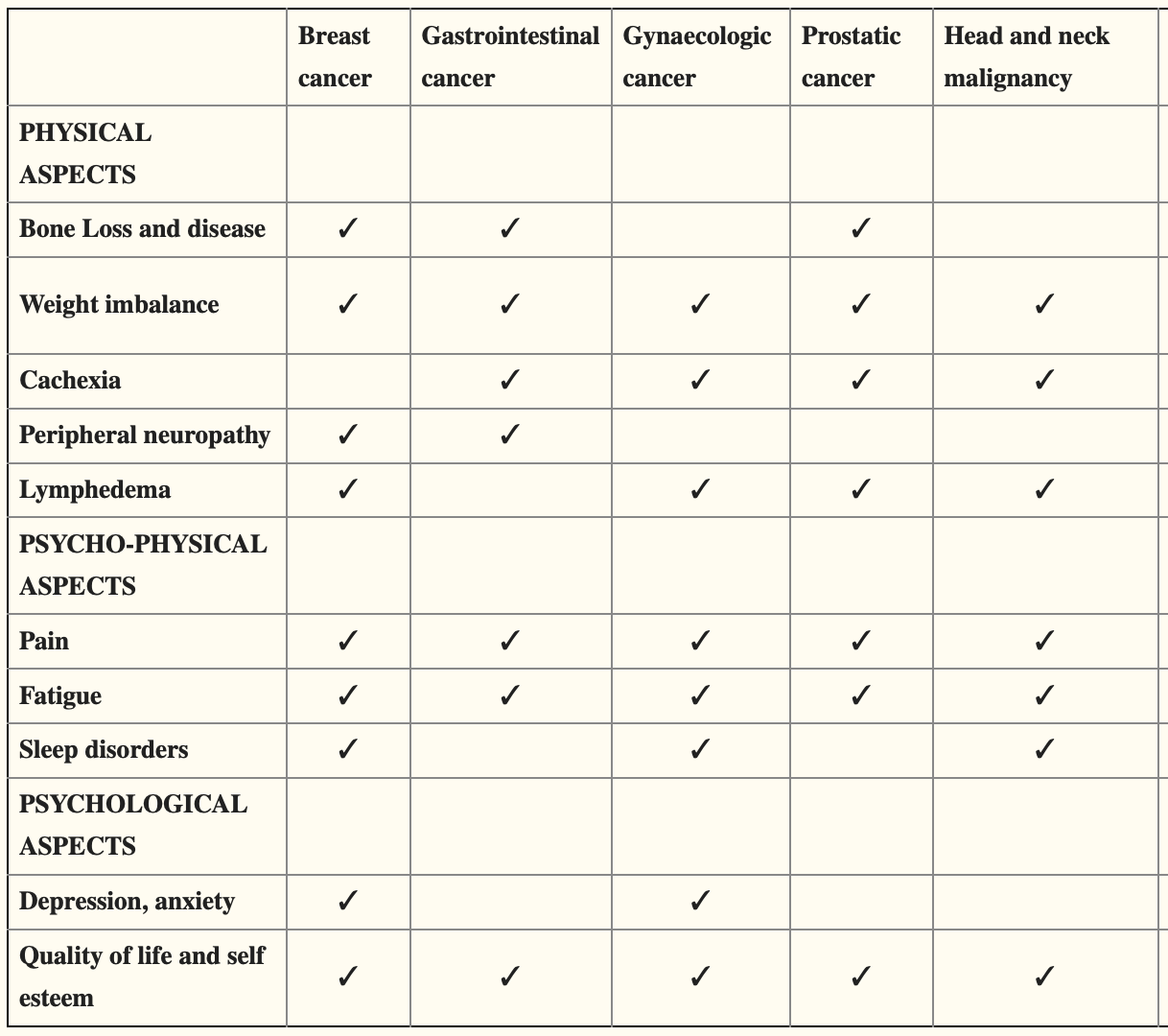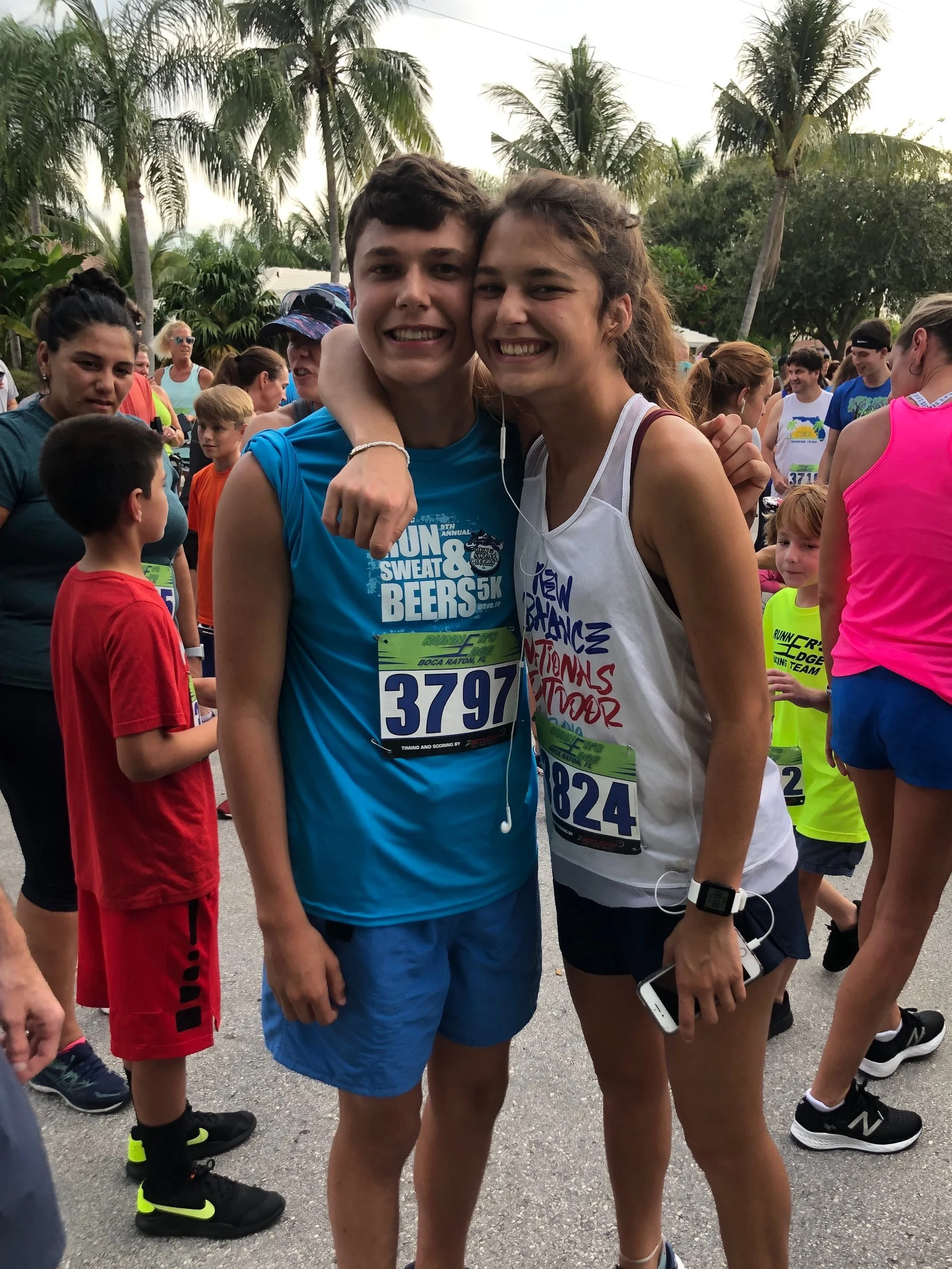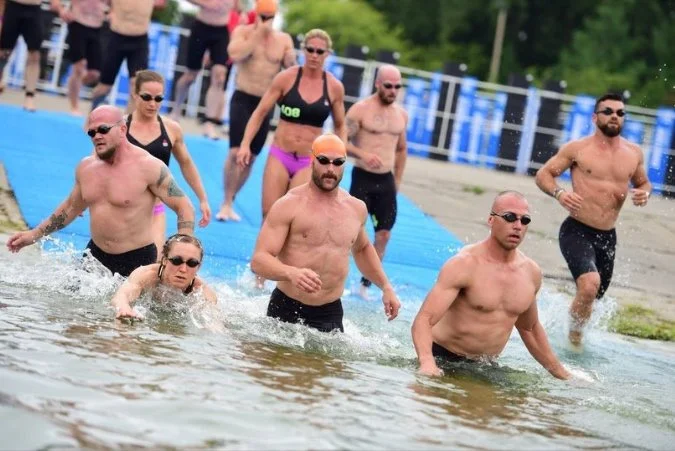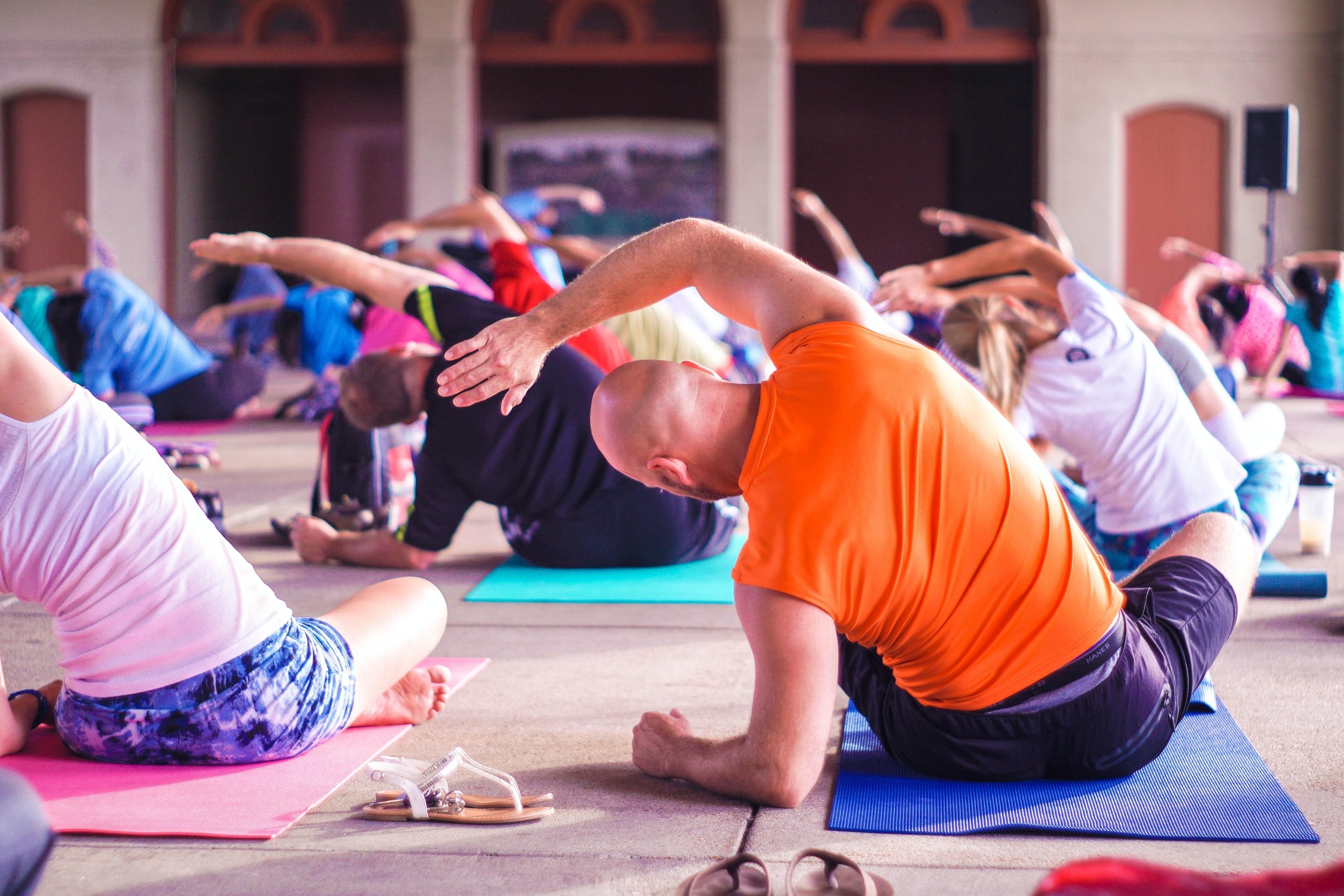
Thrive - Basics
Exercise
WHY EXERCISE is IMPORTANT
I have exercised most of my life. I was a middle school, high school, and college athlete. In my sophomore year of college, I started teaching aerobics classes alongside being a collegiate cheerleader. I then worked in the fitness industry as a trainer and instructor for over 20 years. Despite all of that, I was still unhealthy. Most people would have thought I was healthy since I looked fit, but my nutrition didn’t match my level of exercise.
At the age of 33, I finally learned that although exercise has many health benefits, too much exercise can create an overload of oxidative stress, which causes aging and disease. I started learning about how antioxidants from fruits and vegetables are necessary for protection, performance, endurance, and recovery. You cannot out-exercise poor eating habits. In fact, the opposite is true — you need to eat a diet that protects your body if you are exercising. Visit the Diet page to learn how to fuel your body for optimal function.
There is a lot of research showing the immense benefits of exercise during cancer treatment and throughout recovery. If you’ve been sedentary, it’s a good idea to ask your physician about starting an exercise program.
Joel and I exercised throughout our cancer journeys by taking long walks. Walking with a buddy can allow for a time of dialogue while equipping your body to handle the treatments you are undergoing. Today, our goal is to continuously improve our fitness level, so we have added strength and resistance training to our cardiovascular exercise.
-
There are numerous exercise benefits for a cancer patient: blood pressure regulation, blood sugar balance, optimal body composition, better sleep, and weight control.
-
Learn about the variables that, when implemented, will ensure the success of your exercise regimen.
-
You may exercise on your own, join a gym, or hire a personal trainer. Do whatever make the most sense to you, but find exercise that you enjoy and stay consistent.
-
With the help of a personal trainer, we purchased basic equipment to start exercising at home. Eventually, we set up a home gym with advanced equipment in our garage. It was a game-changer!
-
Exercise has always been a significant part of my life. Leading up to my diagnosis, my exercise regimen was difficult and painful. My healing journey has included a lot of exercise, and today I am stronger than ever.
-
My personal trainer (4th place CrossFit champion in 2017) shares her best tips on exercise. Her guidance and encouragement has been key in my recovery from cancer.
Joel made exercise a priority during cancer treatment, even if it was just walking.
Benefits of Exercise
“If exercise was a pill it would be prescribed to all cancer patients.”
Research shows that exercise reduces the risk of both recurrence and death from cancer. Dr. Keith Block of the Integrative Cancer Center in Illinois says, "45 to 60 minutes per day can reduce cancer mortality by 50%." https://pubmed.ncbi.nlm.nih.gov/25114017/ https://pubmed.ncbi.nlm.nih.gov/24035029/
A 2017 study found that, “Of all lifestyle factors, physical activity has the most robust effect on breast cancer outcomes. Following the recommended 150 minutes of moderate to vigorous exercise or 75 minutes of vigorous exercise per week, along with two to three weekly sessions of strength training, can help reduce the risk of breastcancer recurrence and mortality.” https://www.cmaj.ca/content/189/7/E268
In 2005, a research study released to the medical community showed a protective association between increased exercise and breast cancer survival. Even 30 minutes per day made a significant difference. The more consistent the exercise, the better.
One of the most inspirational stories of cancer and exercise is of Ruth Heidrich. She was already a marathoner when she was diagnosed with Stage 4 breast cancer. Today she is one of the ten fittest women in North America.
Exercise also reduces cancer-related fatigue for patients undergoing traditional treatment, such as chemotherapy. https://pubmed.ncbi.nlm.nih.gov/28253393/
Below are some of the most commonly mentioned benefits of exercise. For a more comprehensive list of benefits for a cancer patient, review this study. https://www.ncbi.nlm.nih.gov/pmc/articles/PMC5862633/
We have made exercise a family affair, supporting events in our community.
Balance
Fatigue, confusion, and low blood counts are some common symptoms that occur with cancer and its treatment. These conditions may create balance issues and possibly lead to falling. Exercise improves balance and stability. So, if you are at risk of falling, add exercise to improve your balance. https://www.ncbi.nlm.nih.gov/pmc/articles/PMC5119910/ https://journals.lww.com/md-journal/Fulltext/2019/07050/Physical_activity_programs_for_balance_and_fall.47.aspx
Blood pressure
Exercise lowers blood pressure by making your heart stronger. A stronger heart can pump more blood with less effort — resulting in less force on your arteries. Individual exercise sessions have an immediate impact on blood pressure, but for sustained blood pressure improvement, exercise needs to become a habit. https://www.ncbi.nlm.nih.gov/pmc/articles/PMC4914008/
Blood Sugar
Exercise helps to stabilize blood glucose levels. Exercise increases insulin sensitivity, which enables the body to better utilize glucose for fuel. In her book How to Starve Cancer, Jane McLelland advises, "take a brisk walk 15-20 minutes after eating, so glucose moves from the bloodstream and redirects to the muscles. This effectively starves the cancer-cell microenvironment.” Exercise offers enormous benefit to patients with diabetes. https://pubmed.ncbi.nlm.nih.gov/21323815/
Body Composition
Lean muscle mass is the total weight of your body minus the fat. When you are first diagnosed, get a body composition test. A personal trainer can do a body composition test for you, and some doctors have machines for testing in their offices. This will allow you to compare your present body composition to what it will be after you’ve been exercising for some time. Do a combination of both aerobic (cardiovascular exercise) and strength training (push-ups, lifting weights, etc.) exercises to burn fat and build lean muscle mass, which increases metabolism. Monitoring your body composition is one good way to determine if you are doing enough exercise and the right type of exercise. With a balanced approach, you will become leaner and your cardiovascular endurance will improve. If not, then it’s time to change up your exercise routine. Exercise helps control weight by increasing calorie expenditure and shrinking fat cells. This is crucial because fat is a poison-carrier and cancer-promoter. Obesity is the biggest driver of inflammation. https://www.ncbi.nlm.nih.gov/pmc/articles/PMC6939705/ https://onlinelibrary.wiley.com/doi/full/10.1111/obr.13256
BONE DENSITY
“Athletes, especially those who are strength-trained, have greater bone mineral densities than nonathletes, and that strength, muscle mass and maximal oxygen uptake correlate with bone density.” https://pubmed.ncbi.nlm.nih.gov/7747001/
Energy
Exercise increases circulating oxygen in the body, which increases your energy level. This increase in oxygen not only supports the cell’s energy production, it allows your body to function better and to use its energy more efficiently. Sedentary people who complain of fatigue can increase energy levels by 20% and decrease fatigue by 65% when they engage in regular, low-intensity exercise. https://www.sciencedaily.com/releases/2008/02/080228112008.htm
Hormones
Exercise releases chemicals called endorphins. These endorphins interact with the receptors in your brain that reduce your perception of pain, which goes a long way in managing cancer treatment. Endorphins also trigger a positive feeling in the body, similar to that of morphine. Exercise also balances other hormones like cortisol, insulin, thyroid hormones, and sex hormones. It also reduces hot flashes, especially through resistance training. https://pubmed.ncbi.nlm.nih.gov/26857887/
Immune System
Exercise stimulates immunity by increasing circulating immune cells. This helps your body better prepare for infection by detecting it earlier. Develop consistency in order to see the most benefits. However, over-exercising can weaken the immune system, especially when there is not adequate nutritional support for that level of exercise. https://pubmed.ncbi.nlm.nih.gov/12696983/
In the year leading up to Joel’s diagnosis, he was training for a marathon. On the weekends, he would run over 20 miles at a time. I was concerned because I knew his dietary habits were not optimal. It is so important to match your level of fitness with a great diet and plenty of sleep.
After a 5K fundraiser at our local cancer center, Joel sent me this text. I got a kick out of this, and so did Joel’s oncologist!
Research shows that resistance training reduces hot flashes. Woo hoo!
Inflammation
Exercise reduces inflammation by activating the sympathetic nervous system. The sympathetic nervous system helps to increase heart rate, blood pressure, and breathing rate. Reducing inflammation is important for cancer patients because “ . . . inflammation predisposes to the development of cancer and promotes all stages of tumorigenesis. Cancer cells, as well as surrounding stromal and inflammatory cells, engage in well-orchestrated reciprocal interactions to form an inflammatory tumor microenvironment (TME).” https://pubmed.ncbi.nlm.nih.gov/31315034/
One 20-minute session of moderate exercise results in anti-inflammatory effects. https://www.medicalnewstoday.com/articles/315255#Analyzing-the-bodys-immune-response-to-exercise
Lymphatic System
Exercise acts as a pump for your lymphatic system, which plays a major role in fighting cancer. With the increased lymphatic circulation, the body’s ability to remove waste is enhanced. Many women who have had a mastectomy are told that they should restrict their exercise, especially lifting heavy weight, in order to not cause or aggravate symptoms of lymphedema. Studies show that this advice can worsen the condition, and that exercise can prevent and improve symptoms of lymphedema. “In breast-cancer survivors with lymphedema, slowly progressive weight lifting had no significant effect on limb swelling and resulted in a decreased incidence of exacerbations of lymphedema, reduced symptoms, and increased strength.” https://www.nejm.org/doi/full/10.1056/NEJMoa0810118
Sleep
A review of the literature reveals that in middle-aged and elderly adults, exercise promoted increased sleep efficiency and duration, especially in those suffering from disease. https://www.ncbi.nlm.nih.gov/pmc/articles/PMC5385214/
Strength
Exercise, especially resistance training, builds and retains muscle. This is especially important as you heal and age. Resistance training improved muscular strength in cancer patients. https://www.ncbi.nlm.nih.gov/pmc/articles/PMC9068528/
Stress
Exercise helps to manage stress by improving your mood. It improves mental health by balancing hormones. Exercise also improves your sense of control, coping ability, and self-esteem, which is all helpful in dealing with a diagnosis. Exercise improves the psychological state of cancer patients. https://www.ncbi.nlm.nih.gov/pmc/articles/PMC8645643/
Sweating
Sweating is another benefit of exercise because it carries toxins out of the body to maintain optimal health. https://www.ncbi.nlm.nih.gov/pmc/articles/PMC3312275/
DIET
Athletes eating a plant-based diet have improved utilization of oxygen, and therefore better performance. https://pubmed.ncbi.nlm.nih.gov/30634559/
Eating high-carbohydrate plant foods rather than protein shortly after exercise is the best way to restore muscle glycogen (essential fuel for intense exercise). https://pubmed.ncbi.nlm.nih.gov/20489032/
Carbohydrate is the preferred energy source for athletics and all human activity, not protein. https://pubmed.ncbi.nlm.nih.gov/16567155/ https://pubmed.ncbi.nlm.nih.gov/24988413/
Visit the Diet page to learn more.
HEART RATE
Be sure to work at the appropriate intensity during your cardiovascular exercise. You can either use the rate of perceived exertion scale (see image to the right), or the target heart rate zone.
To calculate your target heart rate zone:
Take 220 and subtract your age.
Take that number and multiply by 60% (.60) and again by 85% (.85).
The resulting range is your ideal intensity for cardiovascular workouts. Aim to achieve a heart rate within this range.
Buy a watch that monitors your heart rate so you can be sure you are working hard enough, but not overexerting.
HYDRATE
If you exercise, drink even more than the recommended 64 ounces per day for adults.
Athletes need to drink even more water. When athletes are dehydrated, they can experience decreased endurance and less exercise benefits. Just 2% fluid loss can cause these issues. https://pubmed.ncbi.nlm.nih.gov/8438652/ https://pubmed.ncbi.nlm.nih.gov/17921463/
Things to Consider
Image from Arrow Physical Therapy Seattle
Our ancestors practiced "grounding" (walking barefoot) regularly. Grounding increases your voltage (cellular membrane repair). Joel says they practiced grounding because they didn’t have shoes. :)
over-EXERCISing
Exercise creates oxidative stress, requiring athletes to eat more antioxidant-rich fruits and vegetables than sedentary people. Rather than 7-13 servings per day, athletes should consume about 16-18 servings. If you follow the advice on the pages of this website, you will be eating plenty! Here are two studies about exercise, oxidative stress, and the power of antioxidants. https://www.ncbi.nlm.nih.gov/pmc/articles/PMC4333958/ https://journals.physiology.org/doi/full/10.1152/jappl.2000.89.1.21
Exercise Ideas
Schedule exercise on your calendar, just like you would any other important appointment. Aim to exercise at least three times per week as you get started. As you develop a rhythm of exercise, work toward making your activity habitual and including a variety of activities: cardiovascular, strength training, and stretching. I have learned that the governmental minimum recommendations for exercise may be ideal when starting an exercise program, but they will not be enough long term. For instance, ACSM and CDC recommendations state, “All healthy adults aged 18–65 years should participate in moderate intensity (breathing heavily; can hold a short conversation) aerobic physical activity for a minimum of 30 minutes on five days per week, or vigorous intensity (short of breath; can speak a sentence) aerobic activity for a minimum of 20 minutes on three days per week.” https://www.acsm.org/education-resources/trending-topics-resources/physical-activity-guidelines. Although 150 minutes per week is a great goal when starting out, depending on the aerobic exercise, it may not be sufficient over an extended period of time. The bottom line is that each week, month, year — you should be getting stronger and more fit. Endurance and muscle strength should be regularly improving, which can prompt stronger workouts.
For instance, after my diagnosis I started out walking, then jogging, then running. Then I hired a personal trainer and began slowly working on building muscle strength. Eventually I improved so much that we began doing HIIT (high intensity interval training) workouts at least 3-4 times per week. Each workout is about 30-45 minutes, and it is an overall cardiovascular and strength training workout. See HIIT explanation below.
You may exercise on your own, join a gym, or hire a personal trainer. Another idea is to gather some neighbors or co-workers and exercise together. I used to train a group of teachers at their school. Do whatever makes the most sense to you — just find what you enjoy, what motivates you to work hard, and stay consistent. Below are some common recommendations for designing an exercise program.
Cardiovascular
Aerobic exercise develops cardiovascular fitness. Examples are: biking, fast walking, running, swimming, treadmill, aerobic classes at a gym, etc.
First thing in the morning, get your blood pumping with a few minutes of aerobic exercise.
If you don't have time to exercise before work, take a brisk walk or jump on a mini trampoline for ten minutes before leaving for the day.
Aim to do aerobic exercise in your target heart rate zone at least three times per week.
Strength
Strengthen your muscles with resistance exercises (like push ups or weight training) 2-3 times per week.
Stretch
Be careful to gently stretch the body in pain-free ways. If you have pain, invest in a good physical therapist in order to learn how to stretch properly. I stretch every day and especially at night. I set up a mat and some equipment in my bedroom and stretch before bed. For relaxation and flexibility, include stretching and maybe even some type of yoga. Yoga benefits include increased flexibility, balance, and coordination.
Many hospitals are offering yoga classes to cancer patients. Perhaps this is because research shows that yoga improves health. This study shows that patients with high blood pressure and metabolic syndrome who did yoga regularly for a year experienced less inflammation, weight loss, reductions in stress, anxiety, and depression, and improvement in quality of life. People with metabolic syndrome have a higher risk of becoming diabetic, developing cardiovascular disease, or having a stroke due to abdominal obesity, high blood pressure, high blood sugar, high triglyceride levels, or low HDL cholesterol. https://pubmed.ncbi.nlm.nih.gov/29205515/
I do specific stretch movements that I learned from a pain and movement expert.
HIIT (high intensity interval training)
THE WINNING COMBINATION = CARDIO + STRENGTH
In order to make your workouts HIIT, do one minute of max effort activity (completely out of breath; unable to talk), then rest for three minutes. Continue these intervals for 15-20 minutes.
One out of every four workout sessions should be HIIT.
According to a 2022 study (https://neurosciencenews.com/aerobic-exercise-cancer-21840/), HIIT:
increases the glucose (sugar) consumption of internal organs, thereby reducing the availability of energy to the tumor.
reduces the risk of metastatic cancer by as much as 72%.
Doing a yoga pose called "Legs up the Wall" during an online Kaiut yoga class. For more information on this online class, contact Leesa Williams. (leezava@aol.com)
Exercise at Home
“I would definitely not suggest an all-in-one machine to get fit . . . your body is the machine! ”
As I started getting stronger post-op, I knew I needed to get back to strength training. I reached out to a close friend, Sarah Franklin, who was a former Crossfit champion, and I asked her to be my personal trainer. She agreed, but we were in the midst of Covid. So, with her guidance, I ordered equipment to exercise at home. I started with basic equipment, but we ultimately ended up building a gym in our garage. We invested a few thousand dollars to make it work for the whole family, but we ended up saving money in the long run. We realized that the only way we would be really consistent with our exercise would be if it fit seamlessly into our lifestyle. Instead of taking the time to drive to and from a gym, we could spend that time exercising. It was a game-changer! This gym gets used almost every day. I'm just sharing what we did, but you don’t have to do all of this!
Below is a list of exercise equipment suggestions. Choose one or more from each of the categories to start exercising at home. No matter your space limitations or your budgetary constraints, you can create a system that works for you. Purchase equipment that meets your cardio and strength training needs. Look to purchase used equipment from people who are currently using it for hanging laundry. :) If it is in your budget, consider hiring someone to help you figure it all out.
My trainer, Sarah Franklin, has been a big part of my healing! She is a firefighter, paramedic, SWAT medic, 4th place CrossFit champion in 2017, and mother of three! She helped us set up our own home gym.
EQUIPMENT (cardio)
As Sarah says, “. . . your body is the machine,” so it is ideal to work your cardiovascular system by getting outside and walking, running, biking, etc. However, sometimes an indoor cardio machine can be helpful for days with inclement weather. Here are just a few of Sarah’s favorite cardio machines:
Jump rope: choose your cable length according to your height.
Rower: indoor rowing machine that is low impact for the beginner, and intensive enough for the fittest athletes.
Skier: can be wall mounted or used with a floor stand.
Stationary bikes:
Trampolines: I use a mini trampoline almost every day. Rebounding is not only fun, but it positively affects the lymphatic system, just like all physical exercise. I purchased an inexpensive trampoline and used that for two years, then invested in a more expensive version when I knew I would use it every day. Start by keeping your feet on the trampoline and just lightly bounce. Then, when you’re ready, jump — bringing your feet off the trampoline and getting your arms involved (i.e. jumping jacks). You can even sit on the trampoline, lightly bounce on your bottom, and eventually get to the point where you lift your feet off the floor and use your arms to bounce your body more vigorously. I have experimented with all kinds of movements, and I look forward to jumping each day. I try to jump for at least ten minutes each day, ideally in the morning. You can even take your trampoline outdoors and jump.
Mini trampoline ($)
Mini trampoline ($$$$)
EQUIPMENT (strength - BASIC)
Sarah suggests the following starter equipment:
Dumbells:
Kettlebells: (9LB - 203LB) I currently use 35LB
Medicine ball: (4LB - 30LB) I currently use 12LB
EQUIPMENT (strength - advanced)
Sarah suggested the following advanced equipment to build our home gym:
Bar: (choose one of these bars)
Bar (for beginner - 15LB)
Bar (for women - 35LB)
Bar (for men - 45 lb)
Plates/bumpers (10LB - 55LB)
Box: (plyometric—choose one of these boxes)
Loop bands: loop over ankles to work glute
Sled: (choose one of these sleds)
Utility bench: (flat)
Wall-mount rack with pull-up bar:
Monster bands to assist with pull-ups
Rings need to be hung from pull-up bar, ceiling, etc.
MASSAGE
Massage balls and rollers are great for working out stiff muscles.
A massage gun is also a great tool for targeting a specific area of the body.
MATS
VIBRATION PLATE
Vibration machine: A full body vibration plate is a way to quickly move or shake your body. Joel uses this to prevent bowel blockages, too.
YOGA equipment
During Covid, we built a gym in our garage. It is one of the best investments we have made in our health!
Sarah has introduced us to so many great fitness tools like medicine balls.
My dog, Chuck, likes to get in on the jumping with me! It is the cutest thing!
EXERCISE
I have always been active! I consistently played outside when I was little, and that naturally evolved into my becoming a middle, high school, and college athlete. During college, I became a fitness instructor and started teaching group fitness classes. Eventually, I obtained my personal training certification. I practically lived at the gym in my 20s, and I dabbled in body building. I continued fitness teaching and training until I became a mom, at which time I bought a gym membership for myself. I diligently went to the gym and did cardio and strength training for many years. A few years before Joel was diagnosed, I quit my gym membership and started running instead. Leading up to my diagnosis, I noticed cramping and fatigue while running. I just didn’t feel like myself. This should have been a red flag.
Following the diagnosis and surgeries, I knew I needed to return to exercise after healing. I started walking, then gradually running again. Once I was able, I started jumping on a mini trampoline to strengthen my legs and lymphatic system.
Eventually I hired Sarah, my personal trainer. I remember my first session, but I would like to forget it! I actually cried during the workout because I was trying to do a proper pushup and couldn’t. I could not believe how weak I had become. Over time, I became so much stronger. I started cheering myself on — literally, and I am grateful for my trainer, who has encouraged me all along the way. Today, I do cardio several times per week on my own. I do Crossfit training, with the assistance of my trainer, about three times per week. The sessions include HIIT (high intensity interval training), the winning combination of cardio plus strength training. I also try to start every day with ten minutes on the mini trampoline and end every day with ten minutes of stretching.
My Exercise and Pain Journey
My first pull-up without a resistance band!
PAIN
A cancer diagnosis awakened in me a new level of body awareness. Coupling that with more consistent exercise routines, I began noticing more aches and pains. I thought hip and knee pain were a normal part of aging. I realized that I had been living with these ailments for several years and I wanted to deal with this obvious inflammation. In addition to all that I was already doing to thrive in my health, I sought the help of an expert to help me learn to move my body to reduce inflammation and overcome pain. Visit the Thrive page to learn more.
I am grateful to have connected with Eileen Kopsaftis, who is a pain and movement expert. Eileen lives in New York and I am in Florida, but thanks to virtual conferencing, she gave me long-distance help. After fully assessing me during numerous online sessions, she determined my limitations and tailored a program specific to my needs. I perform those movements on a daily basis. Eileen’s teaching has shifted my thinking regarding movement, exercise, stretching, and so much more. I subscribe to her YouTube channel and I am a member of her organization, Have Lifelong Wellbeing. Thanks to Eileen and my commitment to a daily routine of health habits, I’m living pain-free!
From Sarah Franklin:
Along with fruits and vegetables, exercise should be prescribed by every oncologist. After researching cancer and exercise, I discovered over 50 studies that show an increase in survival rates for cancer patients who exercise compared to those who don’t. There is no doubt that all cancer patients should be committed to exercise.
According to the Clinical Oncology Society of Australia, "Reports indicate that approximately 60-70% of cancer patients do not meet aerobic exercise guidelines and it is estimated that approximately 80-90% do not meet resistance exercise guidelines." https://www.cosa.org.au/media/332583/cosa-position-statement-oct2019-web-final.pdf
My Personal Trainer’s Top Tips
Sarah at the Crossfit Games on ESPN in August of 2017.
My exercise recommendations include:
At least 5 hours a week of light to moderate intensity aerobic activity (breathing heavily; can carry on a conversation). This would include activities like biking, hiking, rebounding, roller skating, walking, etc.
At least 2.5 hours of moderate to vigorous intensity (short of breath; can speak a sentence) aerobic exercise that targets major muscle groups.
One of the reasons I love Crossfit is because it includes high intensity interval training (HIIT). It blends aerobic exercise with functional, strength training movements performed at high intensity. This kind of balanced exercise results in a variety of benefits — not only overall fitness, but less fatigue, less mental distress, better quality of life, and overall better outlook.
I also encouraged Julie to make the sauna a regular part of her routine. Now we go together to the sauna after Julie’s training sessions. Whole-body heat stress triggers some of the physiologic responses observed with exercise. https://pubmed.ncbi.nlm.nih.gov/22488284/
I am so proud of Julie — she has come a long way from crying in that first session. My only regret is that we didn’t take her before and after photo!
Next Up...
DE-STRESS
There is a large body of evidence showing that stressful life events and major negative life changes can increase the risk of cancer. I believe stress was a huge contributor to my cancer.
